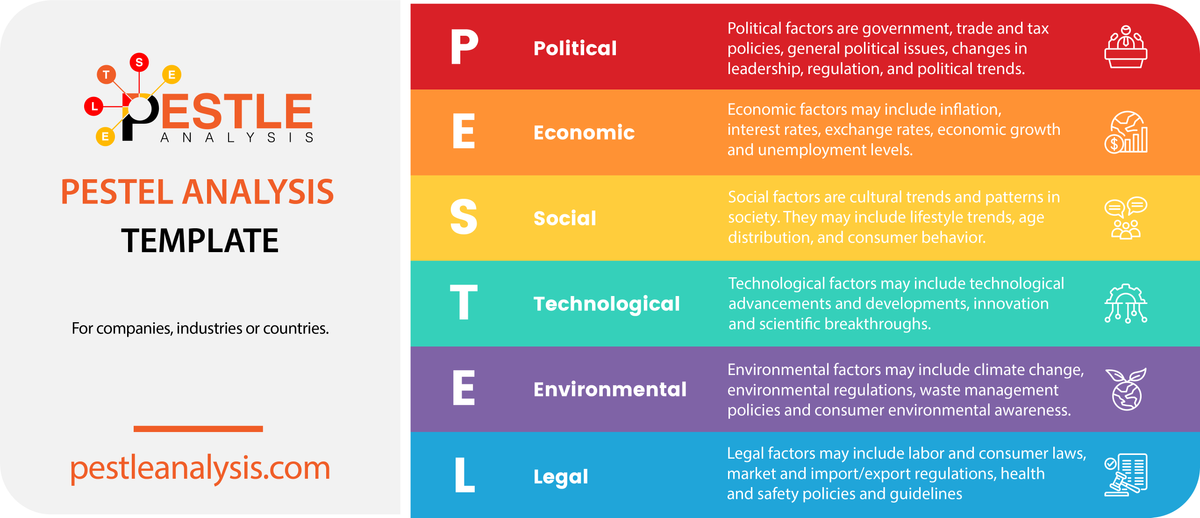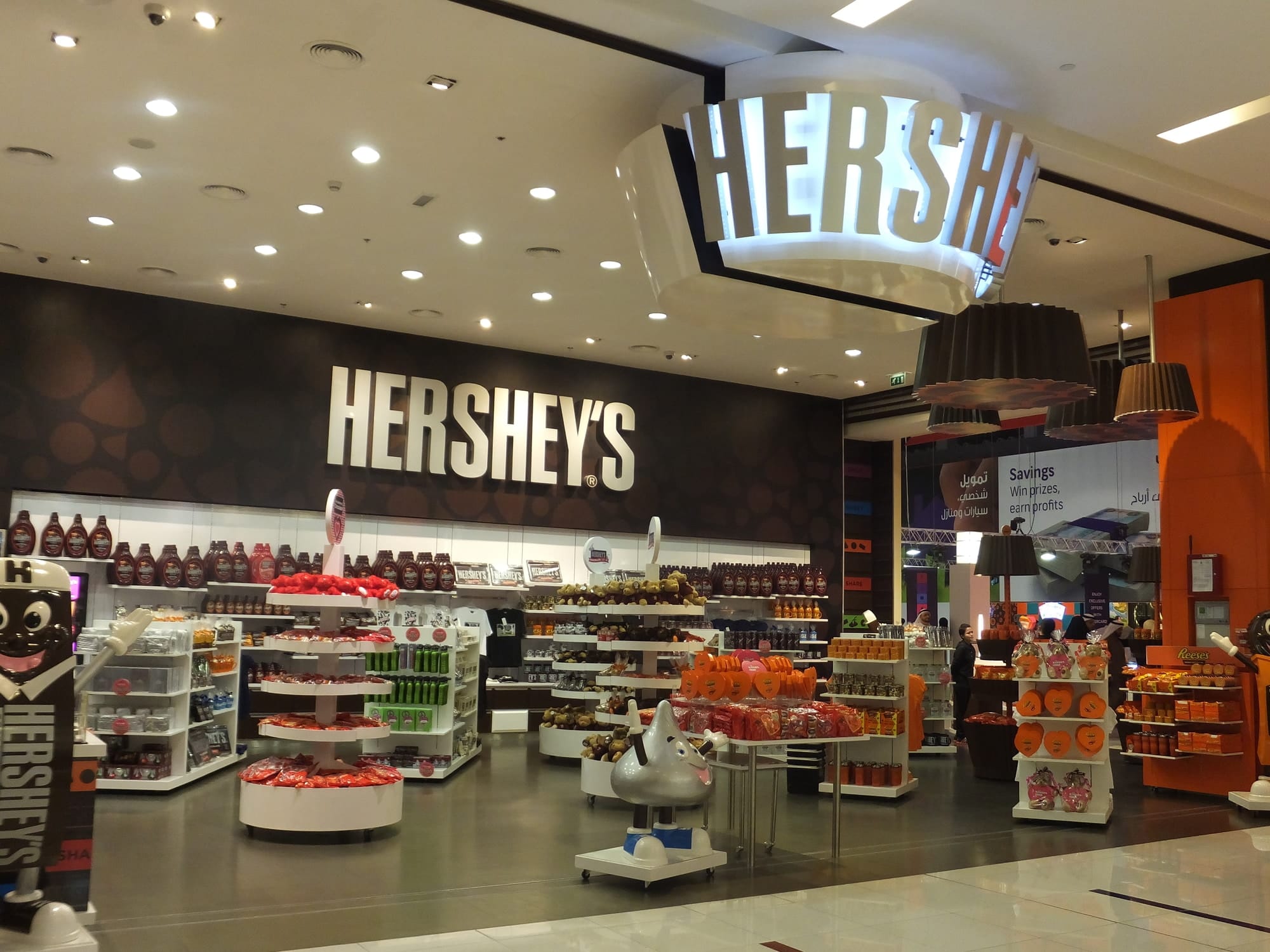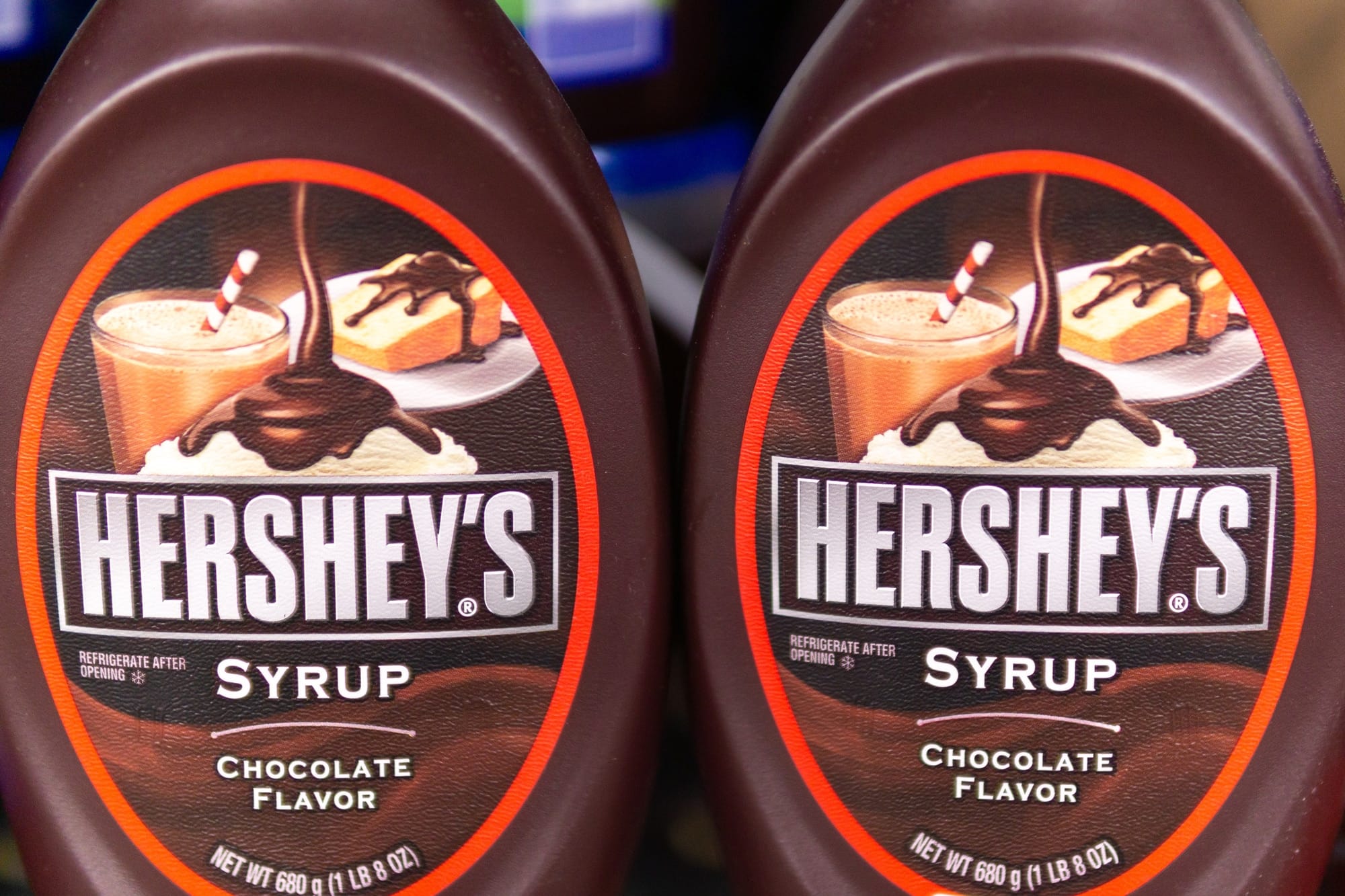What comes to your mind when you hear the name "Hershey"? I don't know about you, but I start drooling because I can't resist Hershey's chocolate bars' sweet and slightly bitter taste.
Today we have decided to make our reader's mouths watery since we will discuss everything about Hershey in detail. First, we will look at the history of Hershey. After that, we will proceed and carry out a Hershey SWOT Analysis as we've conducted a Hershey PEST analysis already.

Many of you might not know what a SWOT analysis is, so let me just give you a brief intro about this tool. SWOT analysis is a technique that helps businesses evaluate their internal and external environments to identify their strengths, weaknesses, opportunities, and threats.
This tool can assess a company, product, place, industry, or person and benefit businesses of all sizes and sectors. By completing a SWOT template, a business can gain insight into its current position and develop strategies to move forward in the most effective way possible.
Since now you know what a SWOT analysis is, we can proceed ahead and discuss the history of Hershey. The Hershey Company, also known as Hershey's, is one of the largest chocolate manufacturers. The company was founded by Milton S. Hershey in 1894 and headquartered in Pennsylvania.
Hershey's Chocolate quickly gained popularity, and the company expanded rapidly. Then, in 1900, Hershey's introduced its signature milk chocolate bar, which became one of the company's most successful products.
The company also began diversifying its product line, introducing new chocolate-based treats like Hershey's Kisses and chocolate bars with almonds. Hershey kept penetrating the market by different means. In 1963 Hershey acquired H.B. Reese Candy Company to increase its market share.
In 1979, Hershey generated $1 billion through sales in a year. Throughout the 20th century, Hershey's continued to grow and innovate. Today, Hershey's is a global brand in more than 60 countries. It is known for its high-quality chocolate products. It is considered one of the food industry's most successful and enduring brands.
Hershey's is one of the most sold chocolate brands because it has a huge customer base. In 2021, Hershey managed to generate $10.09 billion in revenue. This tells a lot about how financially stable Hershey is.
Hershey has 19 manufacturing plants all across the globe that produce millions of chocolates every day. As a result, Hershey requires a large workforce to carry out its operations which is why it employs 18,990 workers worldwide.
Now that we have discussed the history of Hershey and its current operations let's proceed further and carry out a Hershey SWOT analysis.

Strengths of Hershey
A company's strengths refer to the positive internal characteristics that give it an advantage over its competitors. Every organization wants to have maximum strengths to lead in the market. This section will make us aware of the strengths Hershey possesses.
Strong Brand Recognition And Loyalty
The Hershey brand is widely recognized and trusted by consumers around the world due to the company's long history and a strong reputation for producing high-quality chocolate and other confectionery products.
This strong brand recognition can give the company an advantage in the marketplace, as consumers are likely to choose a brand they know and trust over a lesser-known or untested brand. However, it can be challenging for a company to stand out and differentiate itself from its competitors in a crowded and competitive market.
However, the Hershey brand's strong recognition and reputation can help the company stand out and attract new customers, even in a crowded market. This, in turn, can help the company increase its sales and market share.
Wide Range Of Products
The Hershey Company offers a wide range of confectionery products, including chocolate bars, kisses, spreads, and ice cream. This diversity allows the company to appeal to a wide range of consumers, as different people have different preferences regarding sweets.
For example, some prefer chocolate bars, while others prefer chocolate spreads or ice cream. As a result, the company can appeal to a larger customer base and increase its sales by offering various products.
Strong Distribution Network
A well-established distribution network is a key factor in a company's success, as it allows the company to reach customers in different markets worldwide. For example, the Hershey Company has a distribution network that spans more than 60 countries, which helps it to expand its reach and increase its sales.
By having a distribution network in place, the company can more easily bring its products to market through its sales force or partnerships with distributors and retailers.
Having a strong distribution network also allows a company to manage its supply chain better and ensure that its products are delivered to customers promptly and efficiently.
This is particularly important for companies that sell perishable products, such as food and beverages, as it helps to ensure that products are delivered to customers while they are still fresh. Overall, a well-established distribution network is an important asset for any company and can help drive growth and increase market share.
Weakness of Hershey
We will focus on the internal factors hindering the company's progress and contributing to its challenges. In particular, we will identify the weaknesses of Hershey to understand better the company's challenges and how they may be addressed.
Limited Product Diversity
The Hershey Company's product portfolio primarily consists of chocolate and confectionery products, such as chocolate bars, candies, and cookies.
While these products have been successful for the company and helped it become a leader in the industry, the company's product portfolio is largely focused on these products and could also be considered a weakness.
One potential drawback of having a limited product portfolio is that it can limit the company's ability to diversify its revenue streams.
This means that if one product category experiences a decline in demand or faces other challenges, it can significantly impact the company's overall revenue. Diversifying the product portfolio can help to mitigate this risk by spreading revenue across multiple product categories.
Limited International Presence
The Hershey Company is a global company with a presence in more than 60 countries. However, it is still largely focused on the US market, with most of its sales coming from the United States.
While the US market is a significant market for the company, focusing primarily on this market could limit the company's growth potential in the long term. Expanding into new markets can allow a company to tap into new sources of revenue and customers.
By focusing too heavily on a single market, a company may miss out on opportunities to grow and expand in other regions. In addition, relying on a single market also increases the company's exposure to specific risks, such as economic downturns or changes in consumer preferences.
Dependence On A Few Key Brands
The Hershey Company's revenue relies heavily on key brands, such as Hershey's Chocolate, Reese's, and Kit Kat.
These brands are some of the company's most well-known and successful products and generate a significant portion of its overall revenue. While this can be a strength for the company, it can also be considered a weakness.
Suppose one of these key brands faced challenges or lost market share. In that case, it could significantly impact the company's overall performance. For example, if consumers lose interest in a particular brand or if the brand is impacted by negative publicity, it could lead to a decline in sales and revenue for the company.
This could be especially problematic if the company relies heavily on a few key brands and does not have a diverse product range to fall back on.

Opportunities Present For Hershey
In a SWOT analysis table, the opportunities section is used to identify external factors that could provide a company with the opportunity to grow or improve its performance. Opportunities are external factors that the company can take advantage of to achieve its goals and objectives. This section will highlight the opportunities that are present for Hershey.
Increase International Presence
Expanding into new geographic regions is a growth strategy that can allow companies to tap into new sources of revenue and customers.
For the Hershey Company, expanding into new geographic regions where it does not currently have a strong presence could be a way to diversify its revenue streams and increase its market share.
There are several benefits to expanding into new markets. For one, it can provide access to new customers who may not have been reached through the company's current distribution channels.
This can be especially beneficial if the company seeks to reach new customers in different demographics or geographic regions. In addition, expanding into new markets can also provide the company with the opportunity to take advantage of different economic conditions or consumer preferences in those markets.
Diversifying The Product Portfolio
The Hershey Company's product portfolio is largely focused on chocolate and confectionery products, such as chocolate bars, candies, and cookies.
While these products have been successful for the company, the company may be missing out on opportunities to tap into other trends and customer preferences by not offering a more diverse product range.
Expanding into new product categories, such as healthier snack options or plant-based products, could allow the Hershey Company to tap into new trends and customer preferences.
For example, consumers are increasingly interested in healthier snack options, and there is a growing demand for plant-based products. By offering these types of products, the Hershey Company could potentially attract new customers who are looking for these types of options.
Adopting the Latest Technologies
Adopting new technologies can be a way for companies to improve their efficiency and competitiveness. For the Hershey Company, adopting technologies such as automation or advanced manufacturing techniques could provide several benefits.
Automation can help companies to streamline their operations and reduce the need for manual labor, which can help to increase efficiency and reduce costs. In addition, advanced manufacturing techniques, such as 3D printing or robotics, can also help to improve efficiency and reduce production costs.
In addition, these technologies can also help to improve the quality and consistency of a company's products, which can be important for maintaining customer loyalty and satisfaction.

Threats Faced By Hershey
In the threats section, we identify external factors that could harm the organization. Examples of these threats include competition, shifts in market conditions, new regulations, technological advancements, and economic recessions, among others. Now, let's examine the threats faced by Hershey.
High Competition
High competition in the chocolate industry is a significant threat to Hershey's. The chocolate market is crowded with strong competitors, such as Mars, M&M, Oreo and Cadbury, who are all well-established brands. This means that Hershey's must constantly strive to stand out and compete against these brands to maintain its market share.
This can be a challenging task, as these competitors have their own loyal customer bases and resources. As a result, Hershey's must constantly work to maintain its competitive edge to stay ahead in the market.
Increasing Health Awareness
There has been an increase in awareness about the benefits of a healthy lifestyle, as numerous blogs and news programs have begun highlighting this topic.
This acts as a threat to Hershey since people will start abandoning Hershey as the awareness increases. This will cause the sales of Hershey to fall, resulting in the brand suffering financially.
Counterfeit Products
Counterfeiting and the production of low-quality, imitation products threaten Hershey's, particularly in emerging and low-income markets. In these regions, there may be a demand for cheaper, lower-quality alternatives to Hershey's products.
As a result, companies may try to produce and sell counterfeit or imitation versions of Hershey's products to take advantage of this demand.
These fake or low-quality products can damage Hershey's reputation and reduce consumer trust in the company's products. Additionally, selling these counterfeit or low-quality products can negatively impact Hershey's sales and profitability.

Hershey SWOT Analysis: Final Word
Hershey is one of the most famous brands that produce confectionery products. Keeping Hershey's popularity in mind, we conducted a SWOT analysis today.
Initially, we discussed the history of Hershey to know when did the company start operating and all. Then we looked at how Hershey evolved to increase its market share with time.
After that, we conducted a Hershey SWOT analysis to see what internal and external factors impact the operations of Hershey. Therefore, after reading this article, we assume you must know how to conduct a SWOT analysis. In this article, we conducted a SWOT analysis in the form of an essay. However, a concise way to represent the findings of SWOT analysis is through a SWOT Matrix. SWOT analysis is an amazing technique. If you want to know more about it, look at some more SWOT examples.










